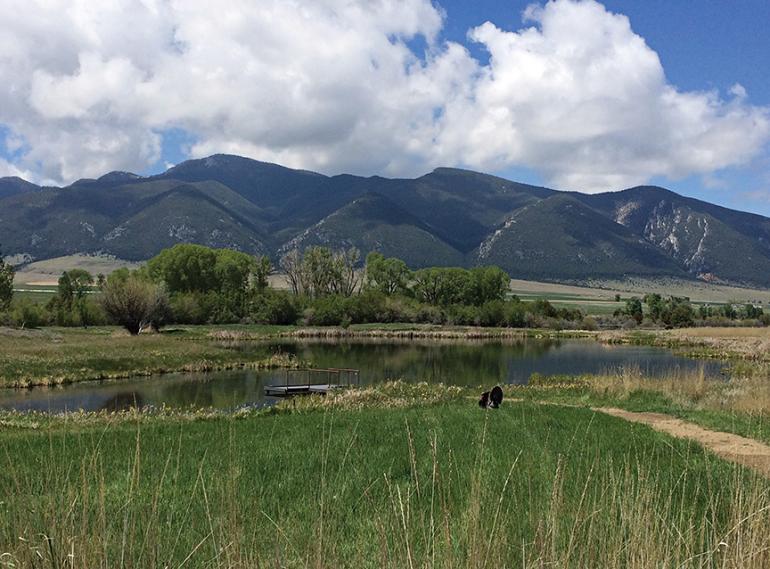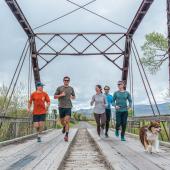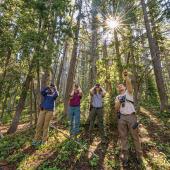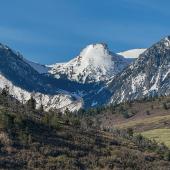A Balancing Act
Managing agriculture, nature, and recreation.
Eight miles of trout-inhabited water curl across an 1,100-acre expanse in the Ruby Valley. The water drips from the delicate feet of a nearby sandhill crane and the curved lip of a stout bull moose; from the tip of a quiet fly rod streaming downwind; from wildflowers, rich native grasses, and alfalfa fields. Few landscapes are as balanced as the Woodson Ranch, thanks in part to the work of the Ruby Habitat Foundation (RHF).
This under-recognized nonprofit is protecting a valuable part of the Ruby River ecosystem as a working ranch and amateur wildlife sanctuary. RHF offers public fishing (four rods per day) and fall hunting (non-lead ammo only) for population control, and opens its doors to local students’ educational experiments. In 2010, Craig and Martha Woodson donated their property to the Montana Land Reliance (MLR)—a nonprofit working to keep Montana land open and undeveloped—after realizing how special a landscape they’d acquired. Shortly afterward, RHF was created in stewardship of the space. “I just wish more people knew about it,” says Gusty Clarke, who interned at the foundation this past summer, and now works for MLR.
The Ruby Habitat Foundation is a real, successful example of coexistence: proof that wildlife, agriculture, and recreation are not necessarily at odds with one another. Dave Delisi, outreach coordinator with RHF, explains the ranch’s unique view on the interplay between the three: “Initially some people think these forces can’t collide and not take away from each other, but in fact, I think each one is better from the other two—it’s synergistic, in a way.” And RHF’s projects back this up, like their five-year ongoing soil-improvement trial, which tests a variety of fertilizers in an effort to move toward a bio-friendly agricultural community.
Delisi says the ultimate goal is to put the ranch under conservation easement, to preserve the land and the bountiful ecosystem it supports. “We can sometimes improve the landscape by working with it instead of against it,” he says—a mentality that’s evident in all aspects of the ranch, particularly their rotational winter grazing method, which helps reduce erosion. “I’m very cognizant of where we’re giving things up to gain things,” Delisi reflects, and given the lush flora, healthy livestock, and abundant wildlife, it’s clear that they’re moving in the right direction.
Check out rubyhabitat.org to see projects in the works and support the group’s efforts.













